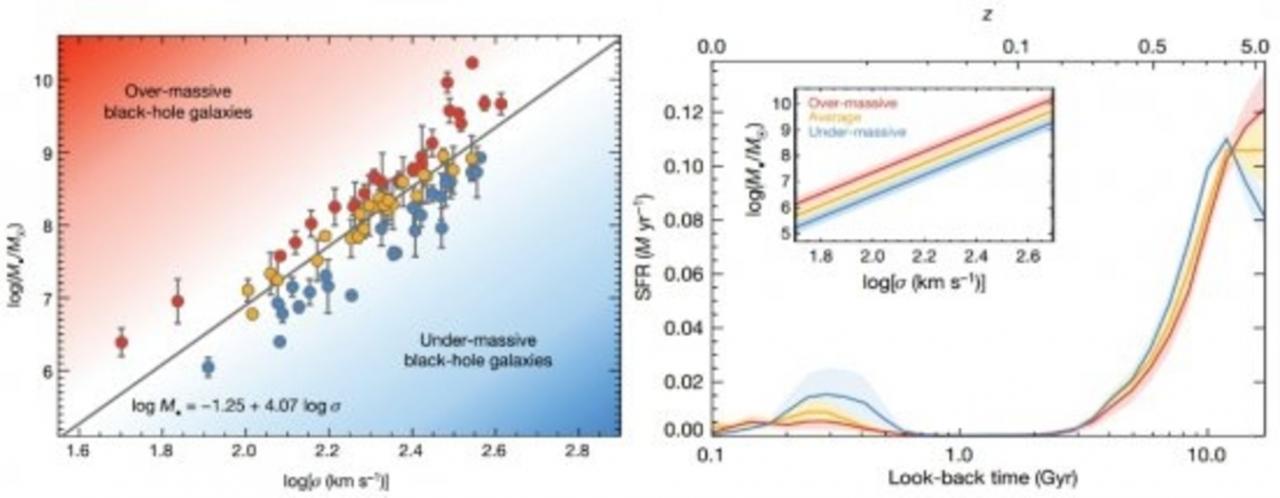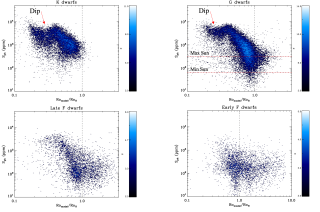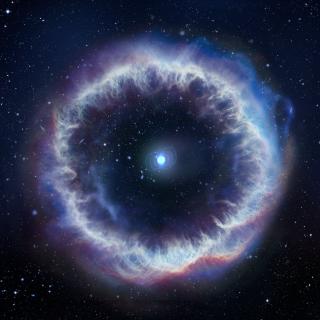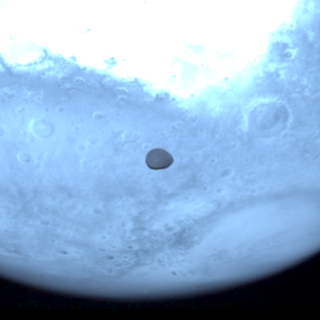The centres of massive galaxies are among the most exotic regions in the Universe. They harbour supermassive black holes, with masses of at least one million, and reaching thousands of millions of times the mass of the Sun. These black holes can cause a great deal of matter to fall towards them, producing the emission of huge quantities of energy before they finally fall into the black hole. Also, during this period (the "active phase" of the galaxy, referred to as an AGN or Active Galactic Nucleus) matter is expelled from outside the black hole in the form of high velocity (relativistic) jets, which can produce violent shocks with the surrounding matter. For some time it has been thought that all of this emission of radiation and particles, and the growth of the black hole itself, should influence the way in which these galaxies form stars, making this star formation more difficult. If this is the case it will allow us to explain observed relations such as that between the mass of the central black hole and the total stellar mass, or understand the found differences between simulations and observations regarding the number of galaxies at a given mass. However, until now, there has been no observational evidence in favour of this idea which has become increasingly well-known and established. Here, we analyse the spectra of the centres of 74 galaxies using data from the Hobby-Eberly Telescope Massive Galaxy Survey with the aim of finding out how the rate of star formation in these systems has changed during their lifetimes (the so-called "star formation history"). To do this we used codes that allow us to compare the observed spectra with those predicted by models of stellar evolution. In this way we can learn how many stars of different ages there are in each of the observed galaxies. As a result, we find different star formation histories in galaxies with black holes of different masses. Our findings suggest clearly that, in effect, supermassive central black holes can affect the formation of stars throughout the lifetime of the galaxy, and that this effect depends on their masses. According to this analysis, galaxies with more massive black holes in their centres show a faster rate of initial star formation, which gives rise to a more massive back hole which then can slow down the star formation in the galaxy. On the contrary, this process is produced much more slowly in those galaxies that currently harbour less massive black holes, starting with a lower star formation efficiency. In addition, the more recent star formation (during the last 700 million years) is greater for galaxies with less massive black holes. In short, these results offer the first observational evidences confirming the interplay between central supermassive black holes and the star formation in massive galaxies, basic for the understanding of how these systems form and evolve.
Left panel: Dispersion relation between black-hole mass and stellar velocity for the galaxies analyzed in this work. The stellar velocity dispersion of galaxies (σ) tightly correlates, with the mass of their supermassive black hole (M•), being the galaxie
Advertised on



